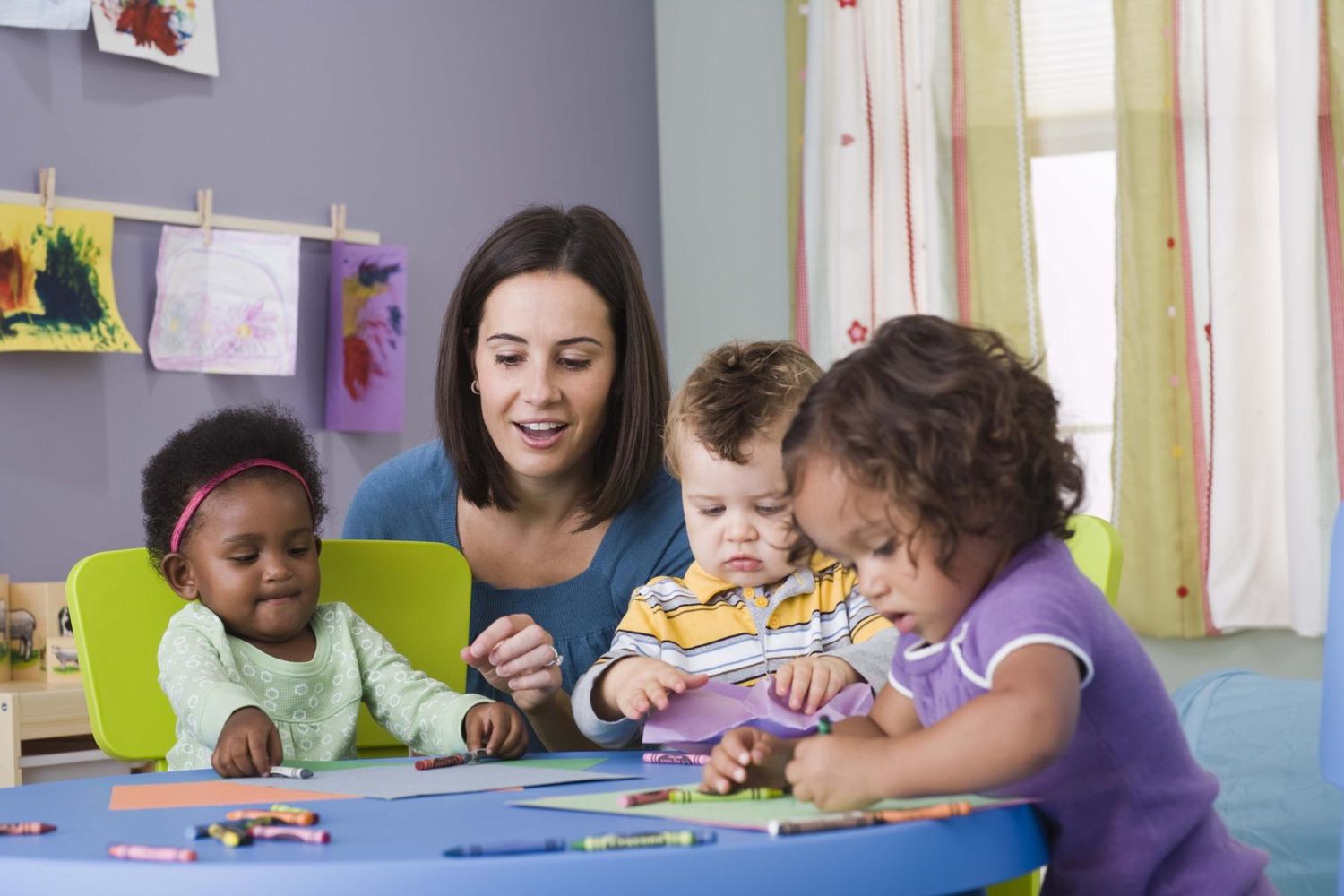Starting child care is a big step for both kids and parents. The transition can feel like sending your little one off to their first day of school, complete with a mix of excitement, nerves, and maybe a few tears (from you or them!). As a parent who’s been through this twice with my own kids, I know the whirlwind of emotions and the endless checklist that comes with preparing a child for this new adventure. This guide is designed to help you navigate this milestone with confidence, offering practical tips, emotional strategies, and actionable steps to ensure your child is ready to thrive in child care. From choosing the right center to easing separation anxiety, we’ll cover everything you need to make this transition smooth and stress-free.
Why Preparing for Child Care Matters
Getting your child ready for child care isn’t just about packing a lunchbox and labeling their backpack. It’s about building their confidence, fostering independence, and setting them up for success in a new environment. A well-prepared child is more likely to adapt quickly, form positive relationships with caregivers and peers, and feel secure away from home.
The Emotional Impact on Kids
Starting child care can be an emotional rollercoaster for young children. They’re leaving the comfort of home and stepping into a world of new faces, routines, and expectations. Preparing them emotionally helps reduce anxiety and builds resilience, making the experience exciting rather than overwhelming.
The Role of Parents in Easing the Transition
As a parent, your role is to be the anchor during this change. Your calm, reassuring presence signals to your child that child care is a safe and positive place. By taking intentional steps before the first day, you can help them feel prepared and empowered.
Choosing the Right Child Care Center
Finding the perfect child care center is the foundation of a successful transition. Not all centers are created equal, and picking one that aligns with your family’s needs and values sets the stage for a positive experience.
Researching Child Care Options
Start by researching local child care centers, considering factors like location, cost, curriculum, and staff qualifications. Visit websites, read reviews, and ask for recommendations from other parents. For example, when I was choosing a center for my daughter, I leaned heavily on feedback from mom groups on social media—it gave me insights no brochure could.
Visiting and Evaluating Centers
Schedule visits to your top choices to get a feel for the environment. Look for clean, safe facilities, engaged staff, and happy kids. Ask about staff-to-child ratios, daily schedules, and how they handle discipline or emergencies. A good center will feel welcoming and organized.
| Criteria | What to Look For |
|---|---|
| Staff Qualifications | Trained in early childhood education, CPR-certified, and background-checked. |
| Safety Measures | Secure entrances, clean spaces, and age-appropriate toys/equipment. |
| Curriculum | Balance of play, learning, and rest tailored to your child’s age. |
| Parent Communication | Regular updates via apps, emails, or daily reports. |
| Cost and Hours | Affordable rates and hours that align with your schedule. |
Questions to Ask During a Visit
- What is the daily routine like for my child’s age group?
- How do you handle separation anxiety or behavioral challenges?
- Are meals and snacks provided, and do you accommodate dietary restrictions?
- What are your policies on sick children or emergencies?
These questions helped me narrow down my choices when I was vetting centers for my son, ensuring I picked one that felt like an extension of our home.
Preparing Your Child Emotionally
Once you’ve chosen a center, it’s time to focus on preparing your child emotionally. This step is crucial for helping them feel secure and excited about child care.
Talking About Child Care
Start talking about child care weeks before the first day. Use positive, upbeat language to describe it as a fun place where they’ll make friends and learn new things. For example, I told my daughter, “You’re going to a special place where you get to paint, play, and meet new buddies!” This framing helped her see it as an adventure.
Reading Books About Child Care
Books are a fantastic way to introduce the concept of child care. Stories like Llama Llama Misses Mama or The Kissing Hand address separation anxiety in a relatable way. Reading these with my kids made them feel understood and less alone in their feelings.
Role-Playing the Experience
Practice child care scenarios at home through play. Pretend to be the teacher, set up a “circle time,” or mimic drop-off routines. This helped my son get used to the idea of saying goodbye and eased his nerves when the real day came.
Building Practical Skills for Child Care
Child care often requires kids to be a bit more independent than they are at home. Teaching them key skills beforehand can boost their confidence and make the transition smoother.
Self-Help Skills
Focus on skills like putting on shoes, using the bathroom independently, or washing hands. My daughter struggled with pulling up her pants after using the potty, so we practiced at home until she nailed it. These small wins made her feel capable in her new environment.
| Skill | How to Teach It |
|---|---|
| Putting on Shoes | Practice with Velcro shoes or slip-ons; make it a fun game with a timer. |
| Using the Bathroom | Encourage independent wiping and handwashing; supervise but let them try. |
| Eating Independently | Use child-sized utensils and practice opening lunch containers. |
| Following Instructions | Play games like “Simon Says” to teach listening and following simple directions. |
Social Skills
Child care is a social hub, so help your child practice sharing, taking turns, and using polite words like “please” and “thank you.” Arrange playdates or group activities to get them comfortable interacting with peers.
Adapting to Routines
Child care centers follow structured schedules, so ease your child into similar routines at home. Set consistent times for meals, naps, and play. This helped my kids adjust to the predictability of their center’s daily flow.
Packing for the First Day
A well-packed bag can make or break the first day. Knowing what to include—and how to label it—ensures your child has everything they need.
Essential Items to Pack
- Clothing: Pack a full change of clothes (including socks and underwear) in case of spills or accidents.
- Comfort Item: A small stuffed animal or blanket can provide comfort during naps or anxious moments.
- Food: If the center doesn’t provide meals, pack a balanced lunch and snacks in easy-to-open containers.
- Supplies: Diapers, wipes, or specific items requested by the center.
When my son started child care, I included his favorite teddy bear, which became his “nap buddy.” It made all the difference during rest time.
Labeling Everything
Label every item—clothes, water bottles, even socks—with your child’s name. Use waterproof labels or a permanent marker to avoid mix-ups. I learned this the hard way when my daughter’s favorite jacket went missing on day one!
Pros and Cons of Overpacking
| Pros | Cons |
|---|---|
| Ensures child has all essentials | Heavy bag can be hard for kids |
| Prepares for unexpected needs | Risk of losing unlabeled items |
| Provides peace of mind for parents | Takes time to organize daily |
Easing Separation Anxiety
Separation anxiety is normal for both kids and parents. With the right strategies, you can help your child feel secure during drop-offs.
Gradual Introductions
Many centers offer a phase-in period where kids attend for shorter hours initially. Take advantage of this to ease them in. My daughter started with half-days, which made the full-day transition much smoother.
Creating a Goodbye Ritual
Establish a quick, loving goodbye ritual, like a special wave or a hug-and-high-five combo. We used a silly “see you later, alligator” rhyme that made my son giggle and feel less clingy.
Staying Calm as a Parent
Kids pick up on your emotions, so stay calm and confident during drop-offs. I’ll admit, I cried in the car after leaving my daughter the first time, but I kept a big smile on her behalf—and it worked.
Supporting Your Child After the First Day
The first day is just the beginning. Supporting your child as they adjust to child care is an ongoing process.
Debriefing After Pick-Up
Ask open-ended questions like, “What was the most fun thing you did today?” to encourage them to share. My son loved telling me about his new friend who shared a toy truck, which helped him feel connected to his new world.
Watching for Signs of Stress
Look for changes in behavior, like clinginess or trouble sleeping, which could signal adjustment struggles. If you notice these, talk to the caregivers for insights and solutions.
Reinforcing Positivity
Celebrate small successes, like trying a new activity or making a friend. A simple “I’m so proud of you!” goes a long way. I made a big deal out of my daughter’s first painting from child care, and she beamed with pride.
People Also Ask (PAA)
How do I know if my child is ready for child care?
Every child is different, but signs of readiness include being comfortable away from you for short periods, showing curiosity about new environments, and having basic self-help skills like feeding themselves. Start with short visits to the center to gauge their comfort level.
What should I pack for my child’s first day at child care?
Pack a change of clothes, a comfort item, diapers or potty supplies, and a lunch if needed. Label everything clearly, and include any medications or special instructions in writing for the caregivers.
How can I help my child with separation anxiety at child care?
Use a consistent goodbye ritual, keep drop-offs brief and positive, and talk about the fun things they’ll do at child care. Gradual introductions and familiar comfort items can also ease their anxiety.
How long does it take for a child to adjust to child care?
Most kids adjust within 2–4 weeks, though some may take longer. Consistency in routines, positive reinforcement, and open communication with caregivers can speed up the process.
Practical Tools and Resources
To make the transition even easier, consider these tools and resources:
- Books: The Kissing Hand by Audrey Penn or Daniel Goes to Daycare by Becky Friedman.
- Apps: Apps like Brightwheel or HiMama allow centers to send real-time updates, keeping you connected to your child’s day.
- Checklists: Create a daily packing checklist to streamline mornings.
| Tool/Resource | Purpose | Where to Get It |
|---|---|---|
| The Kissing Hand (Book) | Eases separation anxiety | Amazon, local bookstores |
| Brightwheel (App) | Real-time updates from caregivers | iOS/Android app stores |
| Waterproof Labels | Prevents lost items | Etsy, Amazon |
FAQ Section
How early should I start preparing my child for child care?
Begin 4–6 weeks in advance with conversations, books, and visits to the center. This gives your child time to process the change and build excitement.
What if my child cries at drop-off?
Crying is normal and usually subsides within a few weeks. Stay calm, use a quick goodbye ritual, and trust the caregivers to comfort your child after you leave.
How do I choose between home-based and center-based child care?
Home-based care offers a cozy, family-like setting, while centers often have more structured programs and social opportunities. Visit both to see what feels right for your child.
Can I stay with my child during the first day?
Some centers allow parents to stay briefly, but prolonged stays can make separation harder. Check with the center and follow their phase-in policy.
What if my child isn’t adjusting well?
If adjustment issues persist beyond a month, talk to the caregivers about specific challenges. Consider a meeting to discuss strategies or a possible change in environment.
Final Thoughts
Getting your child ready for child care is a journey that requires patience, preparation, and a lot of love. By choosing the right center, building emotional and practical skills, and supporting your child through the transition, you’re setting them up for a positive experience. My kids’ first days weren’t perfect—there were tears and forgotten lunchboxes—but with time, they thrived, and I know yours can too. Take it one step at a time, trust your instincts, and soon, you’ll see your child blossoming in their new adventure.
For more tips on child care preparation, check out resources like ChildCare.gov or connect with local parenting groups for support. Ready to take the next step? Start researching centers today and book a visit to find the perfect fit for your family.



